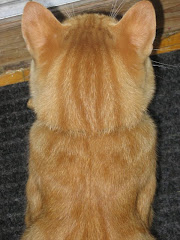

Precious Jams
Text and Photos © Copyright by Füsun Atalay 2005
Text and Photos © Copyright by Füsun Atalay 2005
Alas, in a few more weeks summer, with all its glory, will be a pleasant memory. With a little effort and know how, seasonal fruits can be turned into home-made jams for breakfast or tea time to last through the winter. Especially with the increase in the number of 'pick your own fruit' farms, making jam at home has become a real possibility for everyone.
Making jam should not take much longer than a couple of hours of preparation followed by the rituals of stirring, testing and tasting the concoction. Before starting, it’s important to remember a few golden rules of the art, to obtain a well-set jam with good keeping qualities.
Jam essentials
The difference between jam, jelly, marmalade, or preserve is not very complex, although the tastes and the textures may be.
Made from crushed or chopped fruits and sugar, jam not only holds its shape, but it’s also less firm than jelly. Jams made from a mixture of fruits, especially when they include citrus fruits, nuts, raisins, or coconut, are often called conserves.
Preserves are made of small, whole fruits such as cherries and gooseberries, or uniform-sized pieces of fruits such as apricots or pears in a clear, thick, slightly jellied syrup.
Finally, marmalades are soft fruit jellies with small pieces of citrus peel or fruit suspended evenly in a transparent jelly.
Jam session
Essential ingredients of successful jams and jellies are the right combination of fruit, pectin, acid and sugar . The choice of fruit gives color and flavor; supplies the liquid required to dissolve the sugar; and provides some or all of the pectin and the acid needed.
The difference between jam, jelly, marmalade, or preserve is not very complex, although the tastes and the textures may be.
Made from crushed or chopped fruits and sugar, jam not only holds its shape, but it’s also less firm than jelly. Jams made from a mixture of fruits, especially when they include citrus fruits, nuts, raisins, or coconut, are often called conserves.
Preserves are made of small, whole fruits such as cherries and gooseberries, or uniform-sized pieces of fruits such as apricots or pears in a clear, thick, slightly jellied syrup.
Finally, marmalades are soft fruit jellies with small pieces of citrus peel or fruit suspended evenly in a transparent jelly.
Jam session
Essential ingredients of successful jams and jellies are the right combination of fruit, pectin, acid and sugar . The choice of fruit gives color and flavor; supplies the liquid required to dissolve the sugar; and provides some or all of the pectin and the acid needed.
Pectin is found in fruits, concentrated in their skins and cores. Sour plums, Concord grapes, gooseberries, quinces, red currants and cranberries are high in pectin; apricots, blueberries, cherries, peaches, rhubarb and strawberries are low. Pectin, in the right combination with the sugar and the acid, causes fruits to form a gel.
Additional pectin, called for in many recipes, is available commercially either in powdered or liquid form which are not interchangeable. Powdered pectin is mixed with the unheated fruit or juice. Liquid pectin is added to the cooked fruit and sugar mixture immediately after it’s removed from the heat.
Additional pectin, called for in many recipes, is available commercially either in powdered or liquid form which are not interchangeable. Powdered pectin is mixed with the unheated fruit or juice. Liquid pectin is added to the cooked fruit and sugar mixture immediately after it’s removed from the heat.
Use fully-ripe fruit because you can make up for the deficiency in pectin by using commercial pectin; but you cannot make up for the flavor of ripened fruit.
Sugar serves as a preserving agent, contributes flavor, and helps in gelling. It’s important not to reduce the amount of sugar in traditional recipes. Too little sugar prevents gelling and allows yeasts and molds to grow in the product.
Freezer jams differ from regular jams as the former are not boiled. Boiling is a step for sterilizing and killing harmful microorganisms which may be present. For safe freezer jams, it’s important to keep everything clean during preparation and to store the jams in the freezer instead of a shelf or a cold room.
Freezer jams also require the addition of commercial fruit pectin to set, as their natural pectin is not activated by heat. Since different brands of pectin are not interchangeable, it’s important to follow the exact ingredient quantities and directions specified in the recipes from the manufacturer of the brand you’re using.
Label freezer jams with a date in case they get buried in the freezer or refrigerator. For safety and best quality store in the refrigerator for 3 weeks or in the freezer for up to one year.
Once thawed, freezer jams should be kept in the refrigerator and used within three weeks.
Quince Marmalade
Quince Marmalade
1-1/4 kg quince (about 4 large)
1-1/2 kg granulated sugar
5 cups water
2 Tbsp lemon juice
Wash, seed and quarter quinces. Grate coarsely ( food processor works well). Place water and fruit in a pot; boil for 5 minutes. Add sugar, stir until it dissolves. Turn heat down and simmer 4 to 6 hours until the marmalade thickens and color turns crimson. Stir in lemon juice, bring to boil and turn off heat. Cool completely. Ladle into sterile jars. Keep in a cool, dry place.
Fresh Blueberry Jam
1-1/2 kg granulated sugar
5 cups water
2 Tbsp lemon juice
Wash, seed and quarter quinces. Grate coarsely ( food processor works well). Place water and fruit in a pot; boil for 5 minutes. Add sugar, stir until it dissolves. Turn heat down and simmer 4 to 6 hours until the marmalade thickens and color turns crimson. Stir in lemon juice, bring to boil and turn off heat. Cool completely. Ladle into sterile jars. Keep in a cool, dry place.
Fresh Blueberry Jam
Source: Certo Pectin
1-1/2 qt. fresh blueberries, crush to equal 4-1/2 cups.
2 Tbsp lemon juice
7 cups sugar
2 pouches Certo fruit pectin
1 tsp butter
12 (8 oz.) sterilized jars with lids
2 Tbsp lemon juice
7 cups sugar
2 pouches Certo fruit pectin
1 tsp butter
12 (8 oz.) sterilized jars with lids
Prepare 8 oz. jam jars by boiling them for 10 minutes. Prepare fruit in large 5-quart pan on stove. Stir sugar into fruit. Mix well and add 1 teaspoon butter. Bring mix to full bubbling mix for 5 minutes over high heat; stir constantly.
Pour Certo (2 pouches) into fruit and continue to boil for 1 minute, stirring constantly. Remove from heat and skim off foam. Ladle into jars, wipe rims of jam. Turn jars upside down for 5 minutes and then turn upright. Let set for 1 hour.
Copyrighted Material ~ Copyright © 2005 ~ All Rights belong to Füsun Atalay
Copyrighted Material ~ Copyright © 2005 ~ All Rights belong to Füsun Atalay







































